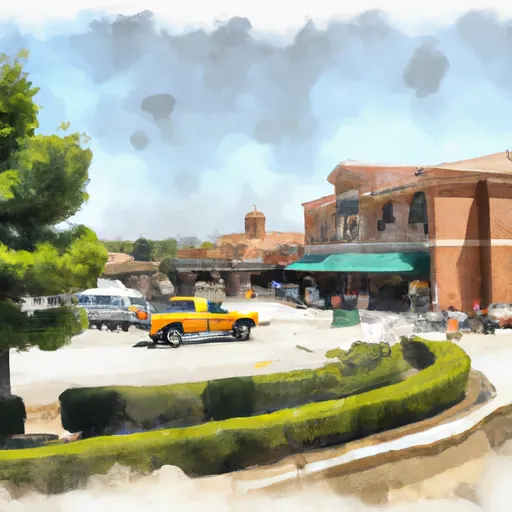-
 Snoflo Premium
Snoflo Premium
Get unlimited access to all our content
With no Ad interruptions! - Start Your Free Trial Login with existing account
Banning
Eden Index
Climate
9.2
•
Recreation
8.7
•
Community
1.3
•
Safeguard
7.1/10

Banning, California is located in the San Gorgonio Pass and experiences a hot-summer Mediterranean climate with hot and dry summers and mild winters. The city is situated near the San Jacinto Mountains and is home to several rivers, including the San Gorgonio River and the Whitewater River. The city has a water treatment plant that treats groundwater for public consumption. Outdoor recreation opportunities in Banning include hiking in the nearby mountains, fishing in the rivers, and visiting the nearby Morongo Casino Resort and Spa for gaming, entertainment, and dining.
What is the Eden Index?
The Snoflo Eden Index serves as a comprehensive rating system for regions, evaluating their desirability through a holistic assessment of climate health, outdoor recreation opportunities, and natural disaster risk, acknowledging the profound impact of these factors on livability and well-being.
Climate Health Indicator (CHI): 9.2
Banning receives approximately
477mm of rain per year,
with humidity levels near 75%
and air temperatures averaging around
17°C.
Banning has a plant hardyness factor of
9, meaning
plants and agriculture in this region tend to thrive here all year round.
By considering the ideal temperature range, reliable water supplies, clean air, and stable seasonal rain or snowpacks, the Climate Health Indicator (CHI) underscores the significance of a healthy climate as the foundation for quality living.
A healthy climate is paramount for ensuring a high quality of life and livability in a region, fostering both physical well-being and environmental harmony. This can be characterized by ideal temperatures, reliable access to water supplies, clean air, and consistent seasonal rain or snowpacks.
Weather Forecast
Streamflow Conditions
Salton Sea
Area Rivers
Salton Sea
Snowpack Depths
Salton Sea
Reservoir Storage Capacity
Salton Sea
Groundwater Levels
Recreational Opportunity Index (ROI): 8.7
The Recreational Opportunity Index (ROI) recognizes the value of outdoor recreational options, such as parks, hiking trails, camping sites, and fishing spots, while acknowledging that climate plays a pivotal role in ensuring the comfort and consistency of these experiences.
Access to outdoor recreational opportunities, encompassing activities such as parks, hiking, camping, and fishing, is crucial for overall well-being, and the climate plays a pivotal role in enabling and enhancing these experiences, ensuring that individuals can engage in nature-based activities comfortably and consistently.
Camping Areas
| Campground | Campsites | Reservations | Toilets | Showers | Elevation |
|---|---|---|---|---|---|
| Fern Basin | 22 | 6,316 ft | |||
| Dark Canyon | 17 | 5,816 ft | |||
| Lake Skinner | None | 1,514 ft | |||
| Lake Hemet | None | 4,349 ft | |||
| Stone Creek - San Jacinto Mountain State Park | None | 5,910 ft | |||
| Hurkey Creek | 100 | 4,430 ft | |||
| Idyllwild - Mount San Jacinto State Park | None | 5,412 ft | |||
| Marion Mountain | 24 | 6,474 ft | |||
| Dripping Springs | 23 | 1,644 ft | |||
| Idyllwild County Park | 102 | 5,343 ft |
Catastrophe Safeguard Index (CSI):
The Catastrophe Safeguard Index (CSI) recognizes that natural disaster risk, encompassing floods, fires, hurricanes, and tornadoes, can drastically affect safety and the overall appeal of an area.
The level of natural disaster risk in a region significantly affects safety and the overall livability, with climate change amplifying these risks by potentially increasing the frequency and intensity of events like floods, fires, hurricanes, and tornadoes, thereby posing substantial challenges to community resilience and well-being.
Community Resilience Indicator (CRI): 1.3
The Community Resilience Indicator (CRI) recognizes that education, healthcare, and socioeconomics are crucial to the well-being of a region. The CRI acknowledges the profound impact of these elements on residents' overall quality of life. By evaluating educational resources, healthcare accessibility, and economic inclusivity, the index captures the essential aspects that contribute to a thriving community, fostering resident satisfaction, equity, and social cohesion.

